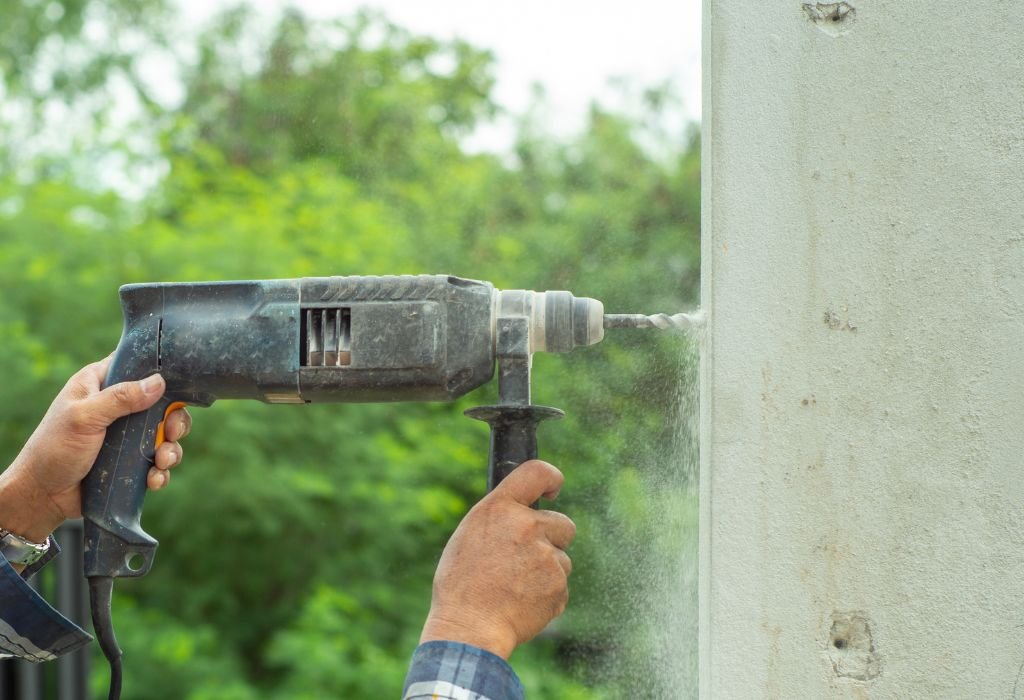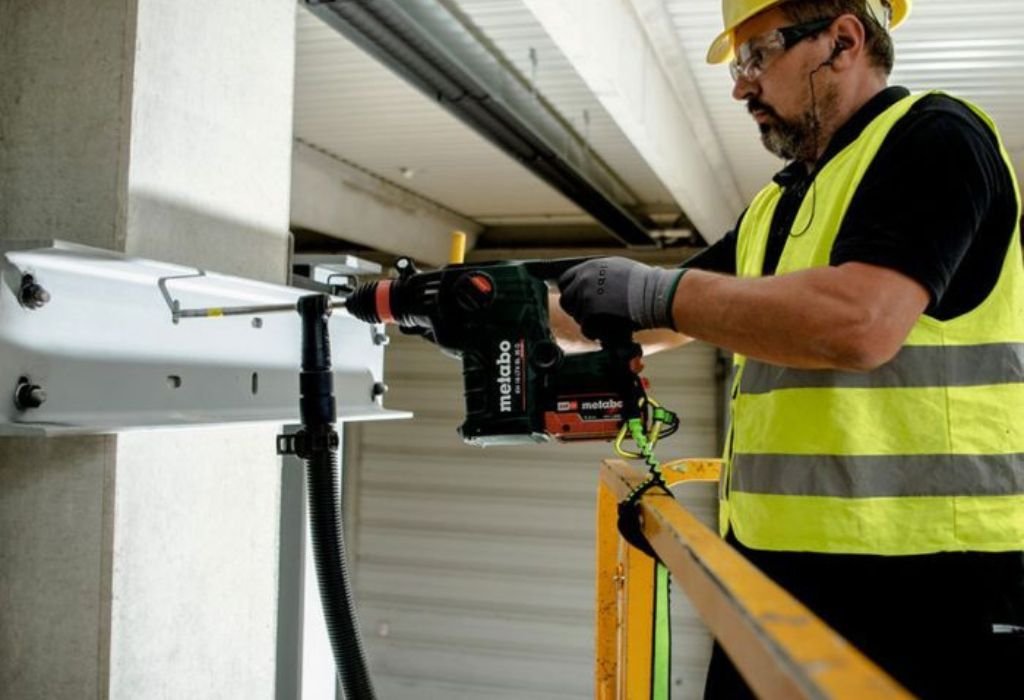In the middle of a renovation project, a contractor notices his rotary hammer heating up and losing efficiency.
The culprit is not the tool itself, but the wrong grease applied during maintenance.
This raises an important question: what type of grease for rotary hammer ensures durability and performance.
The answer can mean the difference between a tool that lasts years and one that fails early.
Rotary hammers rely on grease to reduce friction between gears, pistons, and bit shanks
Without the right lubrication, metal parts grind against each other, causing overheating and costly damage.
According to industry studies, nearly 40% of power tool breakdowns are linked to poor lubrication practices source.
This highlights how crucial grease choice is for heavy-duty tools like rotary hammers.
The global power tools market is projected to reach $40.9 billion by 2030, growing at a 5.3% CAGR source.
As more users invest in advanced tools, proper maintenance becomes even more critical to protect that investment.
Contractors, DIYers, and industrial users all face the same challenge: selecting grease that can handle high heat, heavy load, and continuous hammering.
From OEM-recommended formulas to molybdenum disulfide blends, the options can be overwhelming.
This guide explores the best types of grease for rotary hammers, how often to apply them, and common mistakes to avoid. By the end, the question what type of grease for rotary hammer works best will be answered with clarity, helping users extend tool life and improve safety.
Why Grease Matters for Rotary Hammers

Rotary hammers are built to handle high-impact drilling and chiseling, which creates extreme friction inside the gearbox and piston chamber. Grease acts as a protective barrier, reducing wear and keeping the tool running smoothly.
Without proper lubrication, gears grind against each other, seals dry out, and overheating becomes a serious risk. The right grease ensures consistent performance, less downtime, and longer tool lifespan.
Why does a rotary hammer need grease?
It reduces friction between moving parts, preventing premature wear.
Does grease affect tool lifespan?
Yes, correct lubrication can extend service life by years.
What happens if you don’t grease a rotary hammer?
The tool overheats, loses efficiency, and may fail entirely.
Is all grease suitable for rotary hammers?
No, they require specific high-pressure, heat-resistant formulas.
Can wrong grease void a warranty?
Yes, manufacturers often require approved grease for coverage.
Types of Grease for Rotary Hammers
Not all greases are the same, and using the right type makes a significant difference in tool performance. Rotary hammers typically require high-pressure, heat-resistant lubricants designed for gears and impact systems.
The most common options include lithium-based grease, molybdenum disulfide (MoS2) grease, synthetic grease, and OEM-branded grease. Each has specific advantages depending on workload and brand requirements.
What type of grease for rotary hammer is most recommended?
Molybdenum disulfide grease is widely recommended because it withstands extreme pressure.
Is lithium-based grease acceptable?
Yes, but only if it is rated for power tools and high heat conditions.
Can automotive grease be used?
No, automotive grease lacks the additives needed for rotary hammer gears and can damage seals.
Do SDS-Plus and SDS-Max hammers use different greases?
Generally no, but some manufacturers specify viscosity differences.
Is synthetic grease better than standard options?
Yes, synthetic grease performs better under continuous heavy use and higher operating temperatures.
How Often Should You Apply Grease?
The frequency of greasing depends on usage intensity, tool type, and working conditions. Regular maintenance prevents damage and ensures peak performance.
Light DIY use typically requires greasing every 20–30 hours, while professional daily use may demand fresh grease every 8–10 hours. Heavy demolition often requires daily greasing or after long shifts.
Does over-greasing cause issues?
Yes, too much grease can lead to overheating and seal damage.
Can under-greasing damage the hammer?
Yes, lack of lubrication accelerates wear and breakdown.
Do manufacturers provide grease schedules?
Yes, every user manual includes recommended maintenance intervals.
Should bits be greased too?
Yes, lightly coating SDS shanks prevents sticking and reduces friction.
Can grease interval vary by brand?
Yes, always follow manufacturer instructions for your specific tool.
Where to Apply Grease in a Rotary Hammer
Greasing is not just about quantity—it’s also about location. Key areas include the gearbox, piston chamber, and SDS chuck.
Applying grease in the right places ensures smooth motion, prevents jamming, and reduces wear on critical components.
Do you grease the SDS bits?
Yes, apply a thin coat to prevent bits from getting stuck in the chuck.
Do you grease gears directly?
Yes, the gearbox requires grease to reduce friction and overheating.
Is piston lubrication needed?
Yes, some models require piston chamber lubrication for efficiency.
Do cordless hammers need grease?
Yes, lubrication needs are the same for both corded and cordless models.
Can too much grease in gearbox cause harm?
Yes, excess grease creates internal pressure and can damage seals.
OEM vs Generic Grease: Which Should You Choose?
Choosing between OEM-branded grease and generic alternatives can be confusing. OEM grease is designed specifically for each tool, while generic industrial greases may work if they meet requirements.
OEM greases ensure warranty compliance and maximum performance but are often more expensive. Generic greases like MoS2 can work well if approved for power tools.
Is OEM grease best?
Yes, because it’s tailored for the tool’s design.
Is generic grease cheaper?
Yes, but it may lack essential additives.
Does OEM grease cost more?
Yes, but it guarantees manufacturer approval.
Can industrial MoS2 grease replace OEM?
Often yes, as long as it’s rated for high heat and pressure.
Is mixing grease types allowed?
No, mixing different greases can cause chemical breakdown and tool damage.
Safety and Storage of Grease
Proper storage and handling of grease are just as important as application. Contamination and degradation reduce grease effectiveness.
Keep grease in sealed containers, stored in cool, dry places away from dust. Always use gloves when handling lubricants.
Should grease be stored in sealed containers?
Yes, to prevent contamination and dirt buildup.
Does expired grease lose effectiveness?
Yes, hardened or separated grease is ineffective.
Is skin contact harmful?
Yes, prolonged exposure can cause irritation.
Can grease catch fire?
Quality grease has a high flashpoint, but avoid heat exposure.
Should grease be kept away from dust?
Yes, dust reduces lubrication quality and accelerates tool wear.
Common Mistakes When Greasing Rotary Hammers
Even experienced users make mistakes that reduce grease efficiency. Avoiding these errors protects your tool and saves money.
Over-greasing, under-greasing, or using the wrong grease are the most common mistakes. Ignoring SDS bit lubrication is another frequent oversight.
Is too much grease a problem?
Yes, it creates heat and pressure inside the gearbox.
Is skipping grease dangerous?
Yes, it leads to accelerated wear and tool failure.
Can automotive grease substitute?
No, it lacks the additives required for high-impact tools.
Do users forget to grease SDS bits?
Yes, and this often leads to jammed or stuck bits.
Does ignoring the manual cause issues?
Yes, every manufacturer provides specific grease requirements.
Expert Tips for Greasing Rotary Hammers

Following expert tips helps maximize tool performance and lifespan. Always start with clean surfaces before applying fresh grease.
Use grease guns for precise application and avoid contaminating new grease with dirt. Store your rotary hammer in a clean, dry environment after maintenance.
Should you clean old grease first?
Yes, always remove residue before applying new grease.
Should you use grease guns?
Yes, they ensure even and accurate application.
Is regular inspection important?
Yes, checking grease condition prevents breakdowns.
Should bits be wiped before greasing?
Yes, dirt and dust must be removed to prevent contamination.
Does tool storage affect grease life?
Yes, tools stored in poor conditions degrade grease faster.
Conclusion
The answer to what type of grease for rotary hammer depends on the tool, workload, and brand. Molybdenum disulfide and OEM greases are the best options, providing high-pressure resistance and compliance with manufacturer standards.
Greasing the gearbox, piston chamber, and SDS bits at the right intervals prevents overheating, gear wear, and costly repairs. Mistakes like using automotive grease or overfilling the gearbox can be avoided with proper care.
By choosing the correct grease, following the manual, and maintaining a consistent schedule, your rotary hammer will last longer, work more efficiently, and deliver safer results for both DIY and professional projects.

I’m John F. Nicholas, the founder, lead writer, and drill enthusiast behind 101drill.com. With years of hands-on experience in power tools and DIY projects, I created this platform to share practical knowledge, expert tips, and real-world insights to help others master the art of drilling.
